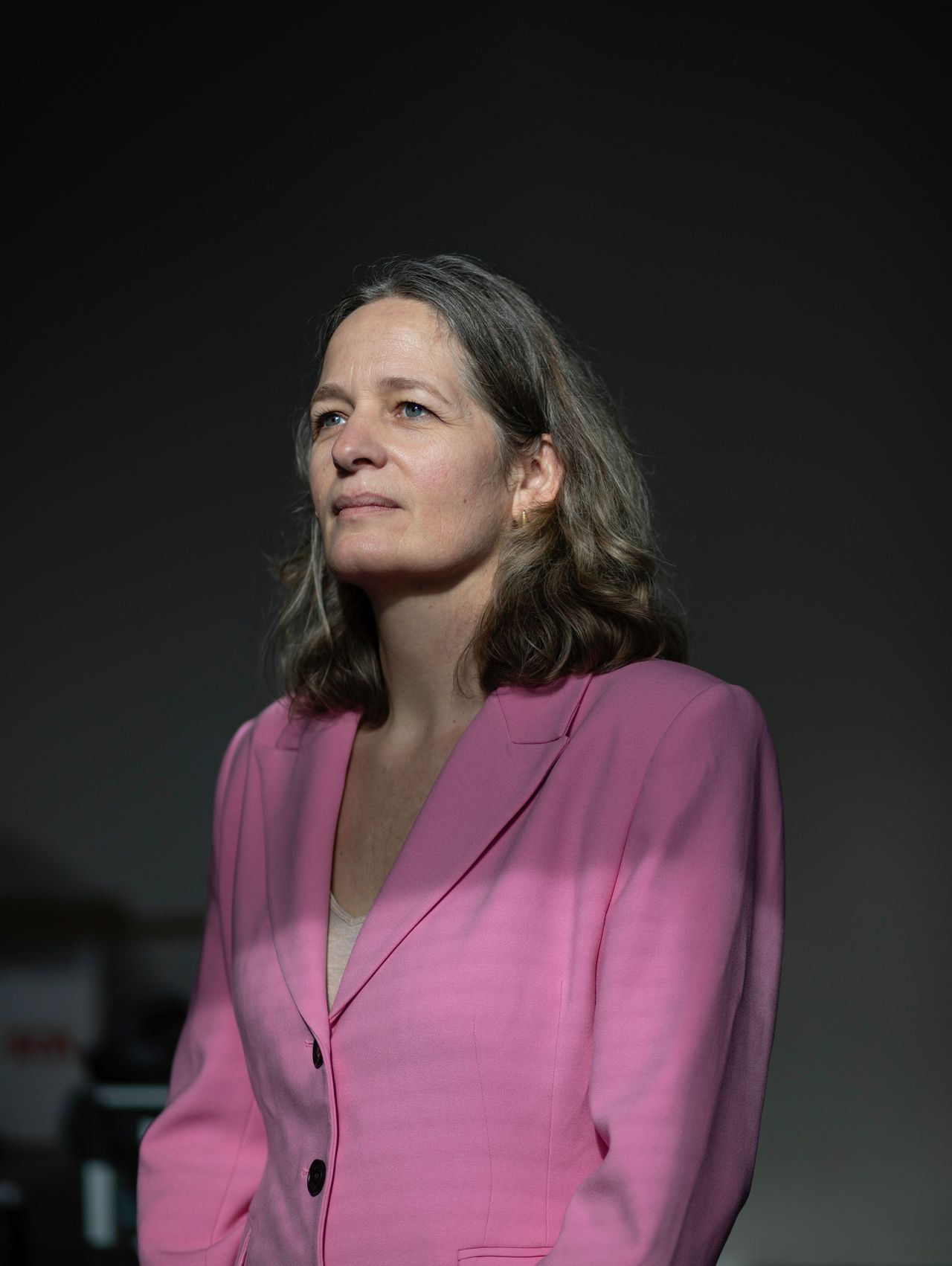In medicine, the woman has remained unseen for a long time – there are still anatomy books with male bodies only

'So you don't get help. You try to live on as well and as badly as it goes with the complaints, and maybe they will pass by again. ” On the first page of a booklet that curator Mieneke opens Te Hennepe, there is a story about what happens when a woman comes to the doctor. It describes how complaints such as headache, fatigue and depression are dismissed as the usual women's complaints that nothing can be done about. The book, entitled Women about help with illness and problemswas published by Feminist publishing house De Bonte was in 1978.
It is almost fifty years later, but still Is the majority of people with inexplicable health problems woman. Men also get a diagnosis of cardiovascular disease on average faster than women, and in cycle and hormone-related disorders, such as endometriosis, it often takes years before a diagnosis is made. Inequality based on gender and gender is also in drug research. Until the end of the last century, women were usually excluded from participation in medicines studies, partly due to the assumption that their hormonal cycle could affect the research results.
This inequality, also known as Gender Biasin recent years, more and more attention, Te Hennepe notes. She set the exhibition Unseen. Inequality in medicine Together that can be seen from 7 March in Rijksmuseum Boerhaave in Leiden.
She has been a curator of the Medical Collection of the Science Museum since 2006. In addition, she teaches medical history for medicine in the Leiden University Medical Center (LUMC) one day a week. She has more feminine than male students in front of her in the lecture. In her lectures, she pays attention to, among other things, the first female doctors who had to fight to get a foot in the door in medicine. Aletta Jacobs was officially admitted to the university in 1871 in the Netherlands. She studied medicine and became the first female doctor.
Stubborn prejudices
« The first batch was often in the idea that they were only allowed to deal with women and children, » says te Hennepe. Despite the arrival of women in the field disappeared stereotypes and prejudices about women and their health problems often not. This put her on the track for this new exhibition in the museum, in which the influence of feminist pioneers such as Jacobs is also discussed.
/s3/static.nrc.nl/wp-content/uploads/2025/02/27130319/data128616862-3883bb.jpg)
She thinks it is a positive development that the number of women in the Medicine study has increased. Yet, according to her, it does not automatically ensure the solution of gender inequality in medicine and health care. « I am sometimes surprised that it is thought that with a larger group of women change will come naturally, » she says. It also depends on what students learn during their studies. In a study book Anatomy, which was published about twenty years ago, there are mainly men still shown. Doctors and care workers have been trained with this type of study books, says Te Hennepe. It is only recently to see more diversity.
The male body has almost always been the norm in medicine. The origin of this is often laid with the Greek philosopher Aristotle, who saw women as a deformed version of the man, explains te Hennepe. Ancient times are more often referred to when it comes to the history of Gender Bias She stands out in medicine. The Greek word hystera means uterus; The organ was already associated with all kinds of problems in women by the ancient Greeks.
In Hennepe, however, it decided to focus primarily on other periods in history. For the exhibition she brought museum objects together that date from the Middle Ages to the twenty -first century.
/s3/static.nrc.nl/wp-content/uploads/2025/02/27130315/data128617505-7340f6.jpg)
Famous anatomical atlas
It is the first time that the inequality has been central to the display of the museum pieces on the basis of gender and gender. Thus the famous anatomical atlas van Bernhard Siegfried Albinus (1697-1770) from the collection coupled to poor attention to the female anatomy. Albinus showed the skeleton of the gay perfectus. This ideal person, depicted by Albinus, was a man and not a woman. « Albinus complained that there were no good female skeletons to be found, » adds te Hennepe. Whether Albinus could not actually find suitable female skeletons and what was the reason for this remains unknown.
Albinus did make a small print of the skin of a black woman, who can also be seen at the exhibition. With this image he wanted to show the difference between light and dark skin that would be thicker and less pain sensitive. This is a myth, but about a century later there was a distinction that there is still a distinction in the pain experience, explains Te Hennepe. Hysterical (white) women would be the most sensitive to pain, workers, babies and people with dark skin the least.
Myths, prejudices and stereotypes trickled to more modern times; They remained or were not completely invalidated. The exhibition is therefore not chronologically, but thematically structured. It starts with the theme 'unseen', in which it is mainly about the lack of attention in medical science for women. Their subordinated position was not recognized for centuries, with which the problem of Gender Bias Also unnoticed and unseen remained.
The objects in the museum are mainly collected by men
For the design of the exhibition, it was collaborated with design agency Maison The Faux. Although the exhibition gradually becomes more colorful, you first enter a waiting room as we know it at the doctor as a visitor. On the wall are old information posters with stereotype images of men and women. Here too Hennepe wanted the subtle power of Gender Bias Make it tangible.
/s3/static.nrc.nl/wp-content/uploads/2025/02/27130316/data128616853-cbda40.jpg)
The theme of 'misunderstood' follows this, where the consequences are discussed. It is about the consequences of late and wrong diagnoses, but also about the rise of experimental treatments for 'women's complaints' that sometimes did more harm than good in the past.
« What you sometimes come across, crying is closer to you than laughing, » says te Hennepe. This feeling came to her when she read nineteenth-century descriptions about hysteria, partly because she knew how women were treated for this. At the time, the surgery was on the rise. Doctors made a connection between hysteria and the ovaries. « At a time when the surgery is on the rise, the solution becomes: removing, » says te Hennepe.
A gynecological research chair from the beginning of the last century was restored especially for the exhibition. « It was a survey, but operations were also carried out, » says te Hennepe. The chair comes from a period in which gynecology was developing as a specialty and there was still a lot of optimism about the use of surgery. It is not known which specific interventions have been performed on it.
You immediately know what it feels like to lie in it
It looks like a torture tool, was told by a colleague in the museum. « As soon as you see this chair, you immediately know what it feels like to lie in it, » she says. It was precisely the resistance that it evoked, she found interesting and was a reason for her to include it in the exhibition. The chair was made with an eye for the comfortable position of the medical practitioner, but there was no attention for the experience that a female patient had in it.
« There is a collective bias in our collection, » says te Hennepe. When the Leiden science museum was founded in 1928 – and also in the decades afterwards – medicine was a white man's stronghold. Men in particular have also collected the museum objects. The medical collection largely reflects what they found important to keep and exhibit it to the public. As a curator, Hennepe tries to acquire historical objects and medical instruments to expand the medical collection.
/s3/static.nrc.nl/wp-content/uploads/2025/02/27130313/data128616826-993cad.jpg)
The exhibition also shows contemporary works of art that are a reaction to the past. The museum bought a sculpture from visual artist Nathalie Latour. She makes realistic images that show similarity with anatomical models from the eighteenth century. Latour works with the same method and materials from that time, but her sculptures have an androgynous look, with which they look both male and female.
/s3/static.nrc.nl/wp-content/uploads/2025/02/27130318/data128616831-8ba280.jpg)
The museum also shows the artwork Atlas of Queer Anatomy From designer Kuang-Yi Ku, which was made in collaboration with professor Henry de Vries of the Amsterdam UMC. It's a response to Atlas of Human Anatomya well -known standard work on anatomy from 1957 by the American surgeon Frank H. Netter. The artwork responds to Western and heteronormative dominance in anatomy education.
Te Hennepe wants to further expand the medical collection of the museum with current stories of patients and experiential experts. The recording and storing of these stories is called 'participatory collecting' in the museum. In 2021, in Hennepe, in collaboration with interest group Freya, who is committed to people with fertility problems, stories from patients and experiential experts about contemporary fertility treatments.
Treatment of endometriosis
In line with the new exhibition, she wants to start a similar project. The stories will no longer end up in the exhibition, but can, for example, be included in a publication, explains. The diagnosis and treatment of endometriosis wants to put them at the center. Endometriosis is a condition in which tissue, which resembles the mucosa in the womb, is found outside the womb. The symptoms range from painful menstruation and ovulation to chronic pelvic pain, fatigue and infertility. It can have a major influence on life. With this condition it takes an average of seven to eight years before the correct diagnosis is made.
The exhibition also highlights how was rebelled against inequality in medicine. There are feminist booklets and a video is shown in which doctors and advocates of godersensitive medicine and care speak. Finally, 'unseen' is about what has to change today. We see and recognize the inequality in the history of medicine, but Gender Bias Is still a problem that needs research. Because of what she received in the preparation of this exhibition, Te Hennepe notices that this is necessary. « There are always questions that should be solved in scientific research, but there is a lot of work to do here. I got convinced of that. «

/s3/static.nrc.nl/images/gn4/stripped/data132599981-a70496.jpg|https://images.nrc.nl/Qr6NaGgwaOaca9kLGrWpmQpYUik=/1920x/filters:no_upscale()/s3/static.nrc.nl/images/gn4/stripped/data132599981-a70496.jpg|https://images.nrc.nl/X_INdJWK_ensES1zCNibzOTfYg8=/5760x/filters:no_upscale()/s3/static.nrc.nl/images/gn4/stripped/data132599981-a70496.jpg)
/s3/static.nrc.nl/images/gn4/stripped/data133214106-cf1d83.jpg|https://images.nrc.nl/lHCsBkZa3OBIhM-PbrArJWQzEzo=/1920x/filters:no_upscale()/s3/static.nrc.nl/images/gn4/stripped/data133214106-cf1d83.jpg|https://images.nrc.nl/as-8vn0aWKqOUDSZ2rIYBPUupuc=/5760x/filters:no_upscale()/s3/static.nrc.nl/images/gn4/stripped/data133214106-cf1d83.jpg)
:format(webp)/s3/static.nrc.nl/wp-content/uploads/2024/06/19152431/data117278521-0042eb.jpg)



